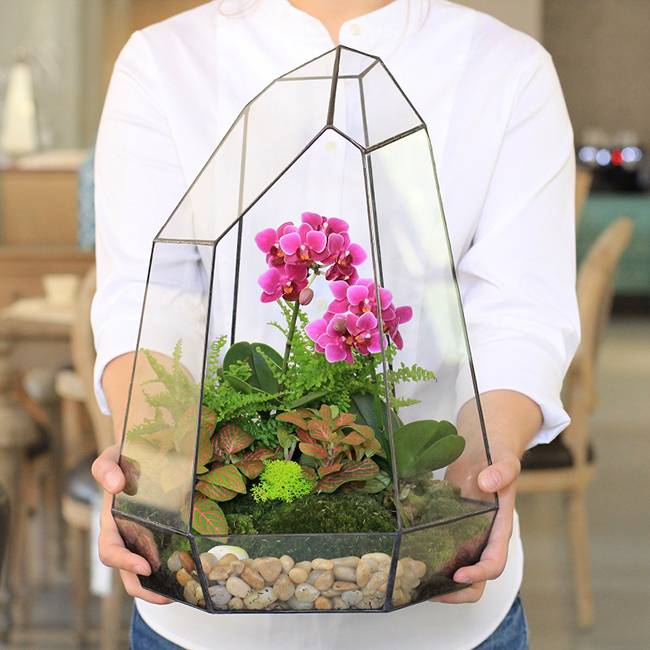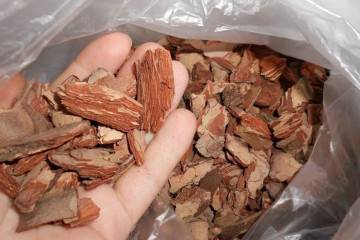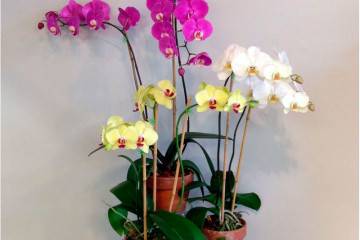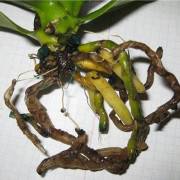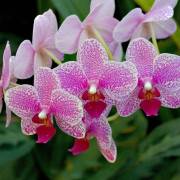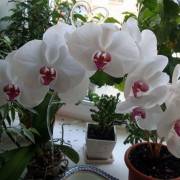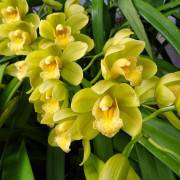Orchid pots: criteria and options for selection
Content:
Orchids are beautiful indoor flowers, for the abundant and long flowering of which you have to fight pretty hard, creating a comfortable environment for the plant and surrounding it with constant care. The active growth of a flower depends on many factors, including which pots for orchids will be chosen.
Pot selection criteria
When deciding which pot to transplant an orchid into after purchase, you need to take into account the following criteria for choosing a container:
- there should be many drainage holes in the vessel through which the soil breathes and provides a sufficient supply of oxygen to the roots;
- transparency. Translucent containers not only look unusual and beautiful, but also allow you to take better care of the flower: dose the amount of water, follow the roots to determine the phase of development of the orchid;
- the size. Must match the root system. The stock for root growth should be small.
Each orchid variety has its own recommendations regarding the material for the flowerpot: phalaenopsis - transparent vessels, vande - glass containers, pseudobulbs and epiphytes - ceramics.
Temperature regime
Before you buy an orchid pot, how to choose it needs to be clarified in advance. The soil should have one constant temperature, respectively, the material for the container should not contribute to the heating or cooling of the root system.
Root aeration
A potted orchid is an unusual flower, its roots have a unique structure - they are covered with velamen. It is a multilayer dead tissue with a spongy structure. It is filled with many air bubbles.
If the orchid does not receive enough oxygen, the velamen will begin to rot and rot. This will cause the flower to lose its ability to absorb both moisture and minerals. To prevent this from happening, the flower container should help aerate the roots.
Moisture outflow
What kind of pot is needed for an orchid to make the flower feel comfortable? Attention must be paid to the fact that there are enough holes at the bottom for the outflow of liquid. You can make them yourself.
Types of pots
The offer of orchid containers is varied. They are made of different materials and can be transparent or painted in different colors. Each type has its own advantages and disadvantages.
Glass
For orchids, transparent glass pots look very beautiful. Even if there are drainage holes at the bottom, growing a flower in such a container is not without its drawbacks:
- accumulation of condensate on the walls;
- the appearance of green algae on the roots.
To prevent the appearance of this, you need to change the substrate 1-2 times a year.
Another difficulty that can be encountered when buying a container is the selection of a suitable diameter and depth. These pots do not have a wide selection.
Transparent
Plastic containers are transparent. They are usually equipped with a sufficient number of drainage holes. They are recommended for those who decide to have an orchid for the first time.
Benefits:
- the ability to monitor the condition of the roots;
- slow drying of the substrate, which allows you to maintain the required moisture level;
- minimal accumulation of salt on the walls;
- maintaining a constant temperature.
Double
If a pair of orchids is being grown, double containers can be selected for them. Their advantage is the convenience of caring for plants, because there are several flowers in one flowerpot. These pots look very beautiful, they are an interior decoration in themselves.
The disadvantage is their depth. Double containers do not have sufficient depth, and therefore the orchid will not be very comfortable. The life cycle of a plant with proper care will last no more than 2-3 years.
Others
The orchid can be planted in a ceramic or earthen vessel, which has the following advantages for use:
- good indicators of moisture permeability;
- passing a sufficient amount of oxygen;
- even distribution of moisture;
- heavy weight, thanks to which the orchid does not fall under its mass.
Disadvantages:
- the risk that the roots will grow to the walls over time, which will create significant difficulties in transplanting the plant;
- there is no way to monitor the root system;
- lack of aeration.
Disadvantages of clay:
- a lot of salt accumulates on the inner walls;
- the surface of the walls is porous, due to which moisture evaporates quickly.
When deciding whether it is possible to plant an orchid in an opaque pot, it must be borne in mind that the lack of the ability to monitor the condition of the roots will create many inconveniences for beginners. Keeping a flower in an opaque vessel is only possible for a person who is experienced in growing orchids.
Size options
To find a comfortable vessel for a flower, you first need to determine its appropriate diameter and depth. Rules:
- the root system must be freely placed;
- the height of the vessel should be equal to the diameter at the neck.
Small
A mini-orchid loves high humidity, so a glass vessel would be the best solution for it.
Children need to be transplanted into such containers so that they are enough for 1 year of growth. You can use a plastic cup or a small jar.
Making a pot with your own hands
It is not difficult to make a suitable container with your own hands, the main thing is to take into account the following rules and recommendations:
- roots need direct sunlight to support photosynthesis;
- the surface of the walls should be smooth. Roots can grow to rough material;
- stagnation of moisture is detrimental to the flower, high-quality drainage is required;
- ventilation is necessary to prevent root decay.
Many novice florists are interested in whether an orchid can be planted in an opaque pot.Yes, but then it will make it much more difficult to track the development and growth of the plant.
Pot size
The depth and diameter are selected taking into account the fact that the roots should not be cramped, but not too loose. The best option is that there is a distance of a couple of centimeters between the roots and the walls.
Manufacturing materials
With your own hands, a container for an orchid can be made from the following materials:
- A clear plastic container, such as a food tray
- tree bark;
- stump. A recess for the roots is drilled in it. This container can be placed on a table or hung. This is not only an environmentally friendly material, but also a great addition to the interior;
- transparent vase;
- ceramic tableware;
- gypsum vases or containers made from a sandy-flower mixture.
You can make a flowerpot for an orchid from wooden dies - oak, bamboo sticks, pine or beech.
Others
For lovers of original ideas, the following options for orchid flowerpots are suitable:
- old vinyl record. When heated, it becomes soft, which makes it possible to give it any shape;
- baskets made of wood, bamboo;
- peeled half of a coconut.
Baskets can be woven not only from wood, but also from wire rods. Self-made containers can become an independent art object, a great addition to the interior.
You can buy an orchid vessel in a store, or you can do it yourself. The material of manufacture, color and degree of transparency of the container do not matter. The main thing is that it meets the basic requirements for creating comfort for the flower.





